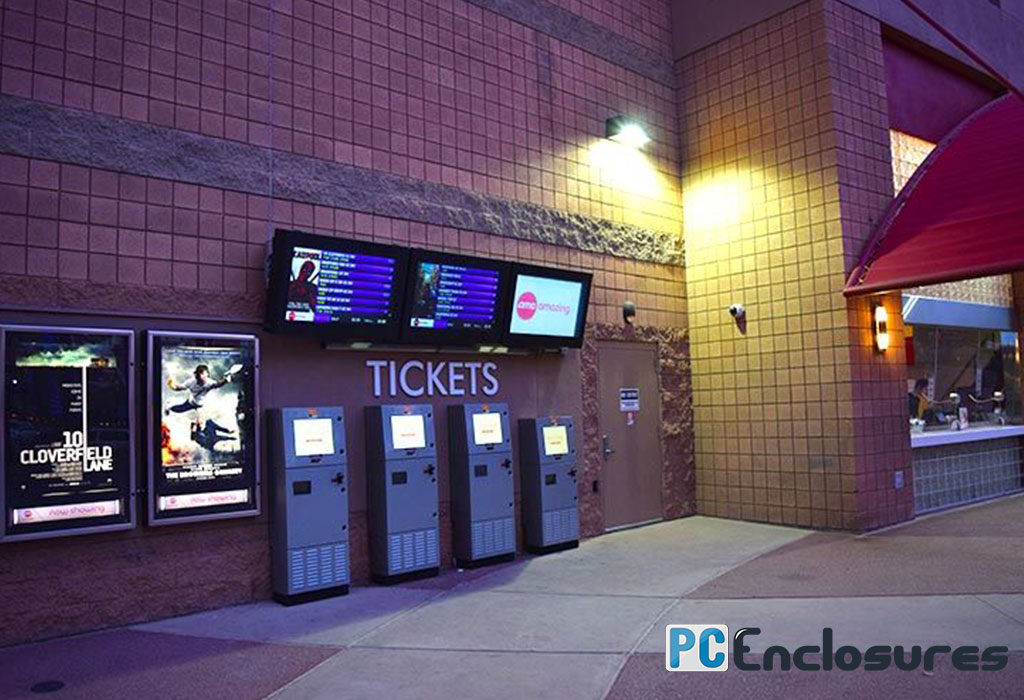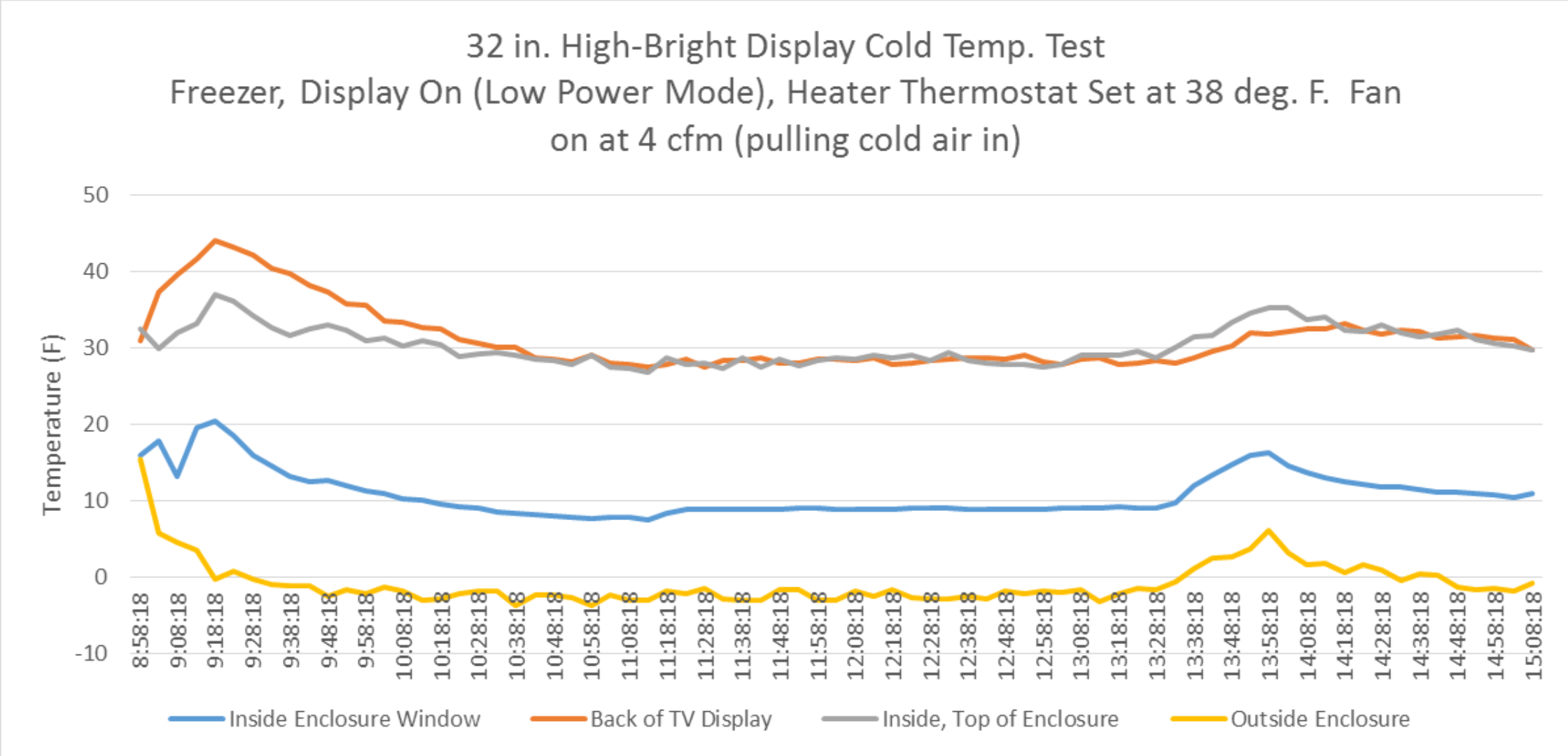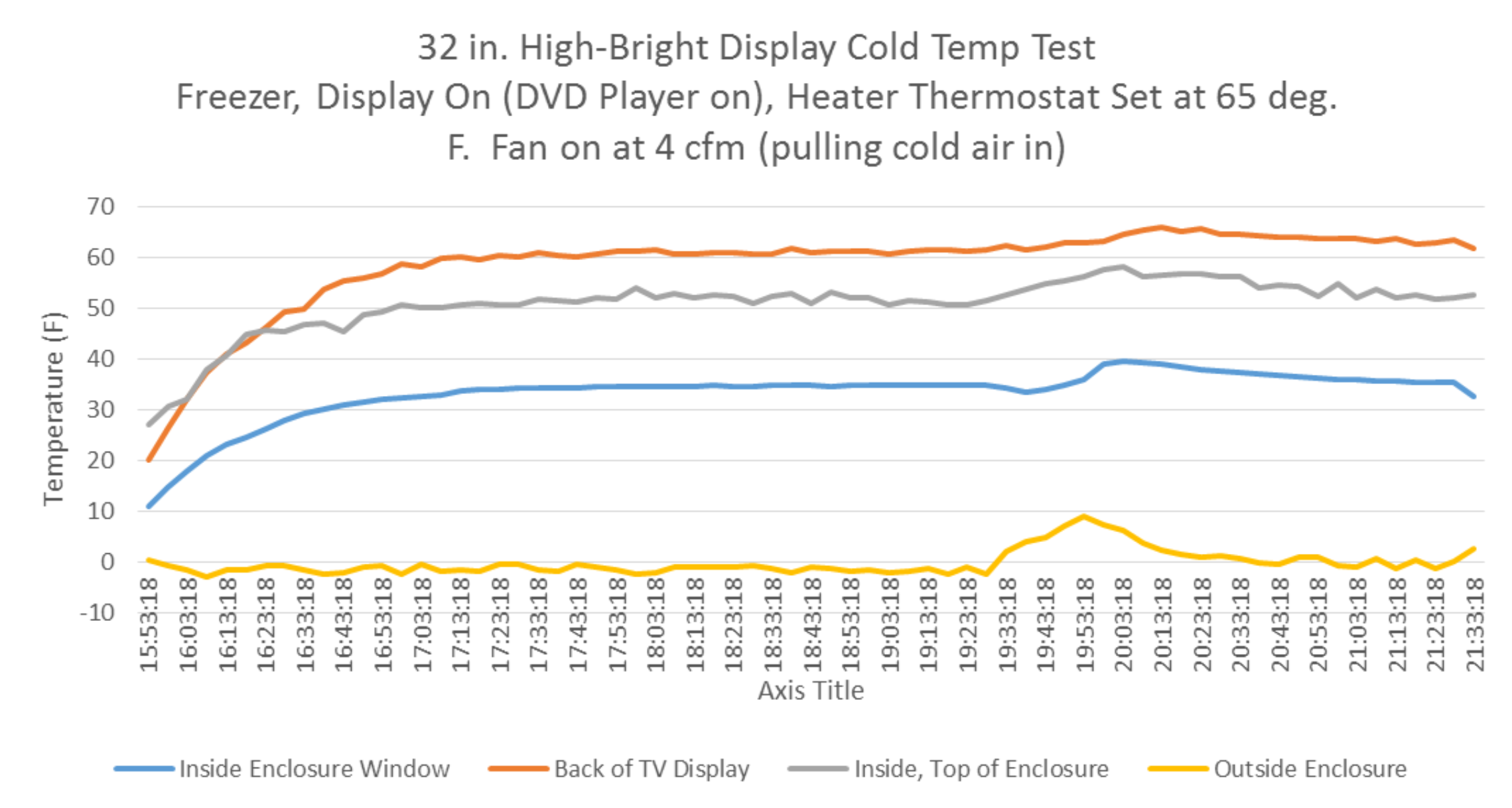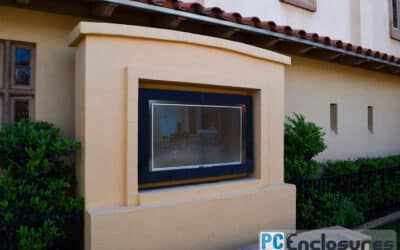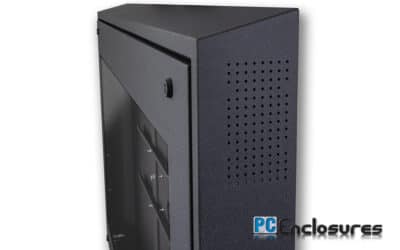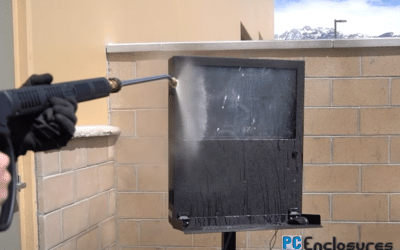Placing a TV or PC (LED Display) in a cold, outdoor or indoor environment can potentially cause damage to the Display. Most TV manufacturers recommend operating above 40oF and storing above 5oF. The LCD or LED screen of a TV is made of liquid crystals that can freeze and expand when exposed to low temperatures. This can potentially cause the screen to crack or shatter. The cold can also affect the internal components of the TV, such as the circuit boards, power supply, and speakers.
In order to protect a TV operating or being stored in cold temperatures, three key measures should be taken: Keep it Covered, Keep it Dry, Keep it Warm. Protect Your Outdoor TV from Bad Weather: Here are 3 Tips
At PC Enclosures, we have deployed hundreds of TV enclosures in cold environments. An example would be a meat packing facility that operates at a temperature in the low 30’s. When we analyze these operating environments, we typically recommend insulating the enclosure and placing a small heater inside.
Insulation
The thickness of insulation can vary, but it is typically determined by the space available inside the enclosure. EPS rigid foam board with a thickness of ½” to 1” and an R rating of R2 to R4 works well in this application. Here is a link to a typical product meeting the spec R-Tech Foam Board.
Heater Sizing
When determining the size of heater, a rule of thumb is 100 W per 1.0 sqft of volume inside of the enclosure. The first heat source to consider is the TV itself. Most of the power consumed by the TV will be dissipated as heat. If a TV has a power usage rating of 125 W, a good first approximation is that the TV will provide 125 W of heating when in operation.
Case Study
PC Enclosures provided several outdoor TV enclosures for the City of Detroit M1 rail system. In this case, the size of TV was 32 inch and the internal volume of the enclosure was 1.6 sqft. The enclosure was made from 304 stainless steel and the window was ¼” thick polycarbonate. The enclosure was insulated with ½” thick R2 foam board.
To test the cold operating performance of the system, cold temperature tests were performed in a walk-in freezer operating at 0oF. The operating power usage specification of the TV display was 125 W and a 100 W heater was used. A small fan, operating at 4 cfm was turned on at the enclosure louver to simulate wind on a cold day.
The first test was conducted with the TV display in low power mode and the heater thermostat set to 38oF. Figure 1 below shows the results of this test.
Figure 1 - Cold Test
In this scenario, the 100 W heater was able to maintain a temperature of about 30oF above the outside temperature behind the TV and about 10oF on the front of the TV. An important learning from this test was that most of the heat lost from the enclosure happens through the polycarbonate window. Since the front of the TV display is the most susceptible to damage from cold, this phenomenon is important when designing the enclosure heater.
In a second test, the TV display was turned on with a DVD machine operating. The 100 W heater thermostat was set to 65oF. The combined heat output of the heater, DVD, and TV was estimated at about 300 W. Figure 2 shows the results of this test.
Figure 1 - Cold Test #2
The results of this test show that the 300 W of heating could keep the back of the TV at about 50oF above the outside temperature and the inside of the window at about 35oF above the outside temperature.
Conclusion
Care should be employed when considering a TV application in cold temperatures. A heated and insulated TV enclosure can solve the cold temperature problems posed to the TV, if the heater is properly sized. The TV display itself will act as a heat source. Additional heating may be required, and a rule of thumb starting place is 100 W of heating for every 1.0 sqft of internal enclosure space.

